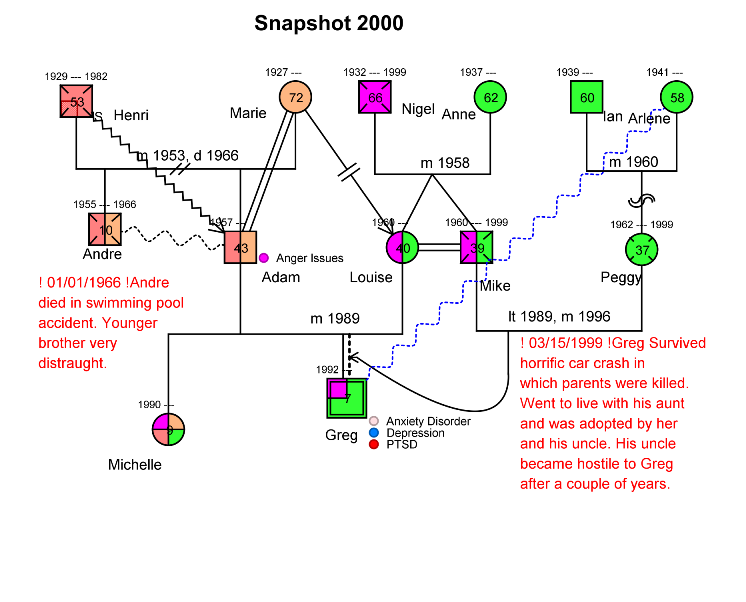

can be a helpful resource for any family that was in the U.S. Next, note what information gaps exist and how you might try to go about filling them. To do so, map out at minimum, information about three generations of your family. When undertaking family exploration for yourself, the goal would be to understand your role in your family system and potentially change your own behavior, not the behavior of another member. For example, if you grew up in a primary triangle with your mother against your father, you are likely to end up feeling comfortable colluding with a mother client and leaving the father client out of the picture. It is recommended that we spend some time working on developing our own family genograms to avoid having our own issues played out with our clients. The process of differentiating from any parent requires learning as much as possible about him/her and this learning necessitates talking to any family members or friends who are alive who may be able to share their perspective on how a parent became that way.Īs per McGoldrick, the systems prospective advocates protecting yourself as necessary from anyone who is relating in an abusive way while encouraging your willingness to open your heart if/when a relative is ready to engage in a respectful relationship.

In the systemic way of viewing the world, the goal is to help your clients see their family members as individuals who had a particular story rather than as a failed or toxic member from whom it may be advisable to cut off. To that end, the author recommends they avoid attacking, defending, placating or shutting down with others. reactively to what someone has said/done.

One of the goals in therapy is to help clients take their power back within their relationships, responding according to how they would like vs. This practice will also give you an opportunity to emphasize to your clients that they are the experts and researchers on their lives and own families, a step that helps ensure that you maintain a healthy collaboration with your clients. Typically, there will be other members who have had similar troubles at identical life cycles and bringing this to light will provide clues for how your clients may want to handle their current stresses.Īlso, periodically review the genogram that you put together with your clients, to help them reconnect to who they are and see patterns in the other family members on their genogram. It is helpful to track their problem and family life cycle phase they are currently facing, through previous generations and their siblings.

What do you know about your parents, aunts, uncles and grandparents? Where did you and they grow up?Īs you engage your clients around what troubles them, seek to understand their narrative of what came before their current problem, what (else) is happening and where they want to go in the future.Do members seek support from others within, or outside the family? Has anyone sought a therapists advice? Is seeking outside guidance viewed negatively?.What meaning do members give to their past stresses, and how may this relate to their cultural background?.What are some of the strengths and assets of the family?.What painful losses or problems did family members have to face in the past?.What type of relationship do you have with your children/parents (and others noted in genogram)? Use appropriate symbols to depict close connection, friction, sexual abuse, physical abuse, etc.Aunts, uncles and grandparents (age, education, health, residence).Siblings (age, education, health employment, relationship status, residence).Parents (age, education, health, residence).Whether have any children (and who is the other parent of each child).Family Make-Up (some of these questions would be naturally covered as part of your intake process with a new client)


 0 kommentar(er)
0 kommentar(er)
